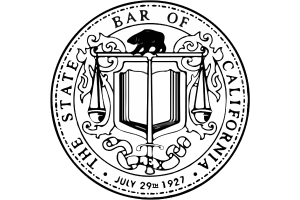- Free Consultation: 866-695-6714 Tap Here To Call Us
SB 567 Explained
The United States of America has the largest prison population in the world. Not only does the US have more incarcerated people than even China, but the United States account for roughly 25 percent of the world’s total prison population, and within the country, California ranks second behind only Texas.
The mass incarceration in California has not only caused prison overcrowding, but has also had a devastating impact on the State’s budget, as the annual cost per prisoner is over $100,000. The tough on crime policies of the 1990s have not only led to overcrowding of California’s prisons and a strain on the State’s budget, but they have also proved counterproductive and have had a detrimental impact on countless of inmates and their families, and have disproportionately affected marginal and minority communities.
Fortunately, in the last several years, California’s leaders have recognized than many of the State’s sentencing laws have not only failed to effectively serve their intended purpose of increasing public safety, but more than that, they have led to excessively punitive sentences, unnecessarily long incarcerations, and overall inequities.
One of the main principles of the criminal justice system is that the punishment has to fit the crime. As part of the ongoing effort to course-correct the State’s policies, California’s lawmakers have been enacting legislation designed to alleviate the unintended detrimental consequence of existing laws and to make the State’s criminal justice system more fair and just. One such criminal justice reform measure is SB 567, which was signed by Governor Newsom on October 8, 2021, and came into effect on January 1, 2022.
Enacted in 1977, California’s determinate sentencing law allowed judges to impose one of three sentences – a low term, a middle term, or a high term and until 2007, the law required that judges impose the middle term, unless there were aggravating or mitigating circumstance that justified the imposition of the upper or lower terms. The decision rested entirely within the discretion of the court. In 2007, in Cunningham v. California, the Supreme Court of the United States held that the State’s determinate sentencing law was unconstitutional because it violated a person’s Sixth Amendment right to a trial by a jury by allowing judges to impose an upper term based on aggravating facts, which were never presented to a jury.
In light of the ruling, in 2007, California’s legislature adopted a temporary law, SB 40, allowing judges to impose the upper term without aggravating facts being presented to the jury, if, in his or her discretion, a judge determines that the upper term best serves the interests of justice and the judge sets forth on the record the reasons for imposing the term. The temporary law implemented at the time was set to expire on January 1, 2022.
SB 567 was the sentencing reform bill that the California’s legislature enacted to replace SB 40. SB 567 creates a presumption of sentencing judgment that does not exceed the middle term, unless there are aggravating circumstances justifying the imposition of a high term. Under the new law, the aggravating facts supporting imposition of a high-term sentence have to be either stipulated by the defendant or found to be true beyond reasonable doubt at a trial by a jury or a judge in a bench trial.
Moreover, unless the aggravating facts and evidence are admissible to prove or defend against the charged offense or enhancement, or are otherwise authorized by law, a defendant has the right to request that the trial on the aggravating circumstances be separated from the trial of charges and enhancements. The new law does allow judges to consider a defendant’s prior convictions in determining sentencing based on a certified record of conviction without submitting it to the jury. Finally, SB 567 clarifies that, at the time of sentencing, a judge is required to put on the record the facts and reasons for choosing the sentence that they are imposing.
SB 567 is not retroactive in the traditional sense. However, the law does provide the possibility of retroactive relief for defendants who were sentenced to life without the possibility of parole and were under the age of 18 at the time they committed the crime. In addition to being required to serve at least 15 years of their sentence prior to petitioning the court, there are additional requirements that such individuals have to meet.
If you want to know more about this new law or want to learn if you qualify, our post-conviction attorneys are here to help. The post-conviction attorneys at the Justice Firm are ready to answer your questions and evaluate your case to determine if you qualify for post-conviction relief under this or any other laws.
While SB 567 is silent on its retroactivity other than as stated above, there is certainly interplay between this sentencing law and other recently enacted criminal justice reform measures including AB 2942.
SB 567 is part of a whole host of new measures that give additional opportunities for people to seek post-conviction relief. If you or a loved one is serving a lengthy prison sentence and have questions about this law or any other law, contact our California appeals attorneys today for a case evaluation locally at (310) 914-2444 or at our Toll-Free number at (866) 695-6714, or click here.
Given the enormous impact that a resentencing hearing could have on a defendant’s life, it is vital that you hire an experienced appeals attorney who specializes in post-conviction matters. At the Justice Firm, we work hard for all of our clients, and hiring the right attorney ensures that your case is presented in the most convincing way possible and will show why a resentencing in your case would serve the interests of justice.









